Assessment of Seismic Intensity Measures on Liquefaction Response: A Case Study of Yinchuan Sandy Soil
Abstract
1. Introduction
2. Materials and Methods
2.1. Definition of Parameters and Nomenclature
2.2. Physical Properties of the Test Material
2.3. Triaxial Test Program
3. Constitutive Model
4. Simulation Setup
5. Typical Results
6. Discussion
Parameter Sensitivity Analysis on MTL
7. Conclusions
- (1)
- The Dafalias–Manzari model proved effective in capturing key features of seismic liquefaction, including pore pressure buildup, stiffness degradation, and permanent ground deformation under various earthquake inputs. The Dafalias–Manzari model proved effective in capturing key features of seismic liquefaction, including pore pressure buildup, stiffness degradation, and permanent ground deformation under various earthquake inputs.
- (2)
- Two critical engineering demand parameters (i.e., SLD and MTL) exhibited weak correlations with conventional ground motion parameters (PGA, IA, D5–95, Ic), indicating the limitations of using these parameters alone for performance-based liquefaction assessment.
- (3)
- By integrating multiple intensity measures through Partial Least Squares (PLS) regression, the prediction of SLD was significantly improved (correlation increased to 0.81), demonstrating the potential of composite seismic indicators in engineering evaluation. However, MTL remained poorly predicted, emphasizing the need to incorporate site-specific soil properties in liquefaction extent assessment.
Author Contributions
Funding
Data Availability Statement
Conflicts of Interest
References
- Yao, C.; Zhong, H.; Zhu, Z. Development of a Large Shaking Table Test for Sand Liquefaction Analysis. Lithosphere 2024, 2024, 2. [Google Scholar] [CrossRef]
- Li, Q.; Zhu, Z. Calibration of an elastoplastic model of sand liquefaction using the swarm intelligence with a multi-objective function. J. Rock Mech. Geotech. Eng. 2023, 15, 789–802. [Google Scholar] [CrossRef]
- Wu, L.; Cheng, W.; Zhu, Z. Fractional-Order Elastoplastic Modeling of Sands Considering Cyclic Mobility. J. Mar. Sci. Eng. 2021, 9, 354. [Google Scholar] [CrossRef]
- Seed, H.B.; Idriss, I.M. Simplified Procedure for Evaluating Soil Liquefaction Potential. J. Soil Mech. Found. Div. 1971, 97, 1249–1273. [Google Scholar] [CrossRef]
- Arias, A. A measure of earthquake intensity. In Seismic Design for Nuclear Plants; MIT Press: Cambridge, MA, USA, 1970; pp. 438–483. [Google Scholar]
- Kayen, R.E.; Mitchell, J.K. Assessment of Liquefaction Potential during Earthquakes by Arias Intensity. J. Geotech. Geoenviron. Eng. 1997, 123, 1162–1174. [Google Scholar] [CrossRef]
- Bommer, J.J.; Martínez-Pereira, A. The Effective Duration of Earthquake Strong Motion. J. Earthq. Eng. 1999, 3, 127–172. [Google Scholar] [CrossRef]
- Kramer, S.L.; Mitchell, R.A. Ground Motion Intensity Measures for Liquefaction Hazard Evaluation. Earthq. Spectra 2006, 22, 413–438. [Google Scholar] [CrossRef]
- Kayen, R.; Moss, R.E.S.; Thompson, E.M.; Seed, R.B.; Cetin, K.O.; Der Kiureghian, A.; Tanaka, Y.; Tokimatsu, K. Shear-Wave Velocity–Based Probabilistic and Deterministic Assessment of Seismic Soil Liquefaction Potential. J. Geotech. Geoenviron. Eng. 2013, 139, 407–419. [Google Scholar] [CrossRef]
- Kramer, S.L.; Stewart, J.P. Geotechnical Earthquake Engineering; CRC Press: Boca Raton, FL, USA, 2024. [Google Scholar]
- Wood, C.M.; Cox, B.R.; Green, R.A.; Wotherspoon, L.M.; Bradley, B.A.; Cubrinovski, M. Vs-Based Evaluation of Select Liquefaction Case Histories from the 2010–2011 Canterbury Earthquake Sequence. J. Geotech. Geoenviron. Eng. 2017, 143, 04017066. [Google Scholar] [CrossRef]
- Boulanger, R.W.; Idriss, I.M. CPT and SPT Based Liquefaction Triggering Procedures; Report No. UCD/CGM-14/01; University of California: Davis, CA, USA, 2014. [Google Scholar]
- Iwasaki, T.; Arakawa, T.; Tokida, K.-I. Simplified procedures for assessing soil liquefaction during earthquakes. Int. J. Soil Dyn. Earthq. Eng. 1984, 3, 49–58. [Google Scholar] [CrossRef]
- Liu, C.; Macedo, J. Machine learning-based models for estimating liquefaction-induced building settlements. Soil Dyn. Earthq. Eng. 2024, 182, 108673. [Google Scholar] [CrossRef]
- GB/T 50123-2019; Standard for Geotechnical Testing Method. China Planning Press: Beijing, China, 2019.
- Liu, Y.; Zhang, Q.; Liu, R. Effect of particle size distribution and shear rate on relative viscosity of concentrated suspensions. Rheol. Acta 2021, 60, 763–774. [Google Scholar] [CrossRef]
- Knippel, E.P.; Xiong, Q.; Vargas, A.P.V.; Hampton, J.C. Measurements of elastic properties and their dependencies within a damage mechanics workflow. Rock Mech. Bull. 2023, 2, 100083. [Google Scholar] [CrossRef]
- Zhu, Z.; Zhang, F.; Dupla, J.-C.; Canou, J.; Foerster, E. Investigation on the undrained shear strength of loose sand with added materials at various mean diameter ratios. Soil Dyn. Earthq. Eng. 2020, 137, 106276. [Google Scholar] [CrossRef]
- Sarkar, G.; Sadrekarimi, A. Undrained shearing behaviour of oil sands tailings. Soil Dyn. Earthq. Eng. 2022, 161, 107410. [Google Scholar] [CrossRef]
- Kang, Y.; Qiang, Z.; Fengming, L.; Tingcheng, Z.; Pengfei, C.; Haonan, L.; Yu, B.; Panbo, D.; Jiang, L.; Zishan, J.; et al. Simulation of gangue bulk tamping technology in solid filling mining: A method for performance evaluation. Powder Technol. 2025, 466, 121404. [Google Scholar] [CrossRef]
- Zhang, H.; Jin, Y.; Liu, Q.; Zhao, Y.; Gao, Q. Intelligent monitoring method for tamping times during dynamic compaction construction using machine vision and pattern recognition. Measurement 2022, 193, 110835. [Google Scholar] [CrossRef]
- Skempton, A.W. The pore-pressure coefficients A and B. Geotechnique 1954, 4, 143–147. [Google Scholar] [CrossRef]
- Gharehdaghi, M.; Shahbodagh, B.; Khalili, N. Pore pressure parameters for unsaturated soils. Comput. Geotech. 2024, 172, 106441. [Google Scholar] [CrossRef]
- Dafalias, Y.F.; Manzari, M.T. Simple Plasticity Sand Model Accounting for Fabric Change Effects. J. Eng. Mech. 2004, 130, 622–634. [Google Scholar] [CrossRef]
- Cheviakov, A.; Ganghoffer, J.-F.; Rahouadj, R. Finite strain plasticity models revealed by symmetries and integrating factors: The case of Dafalias spin model. Int. J. Plast. 2012, 44, 47–67. [Google Scholar] [CrossRef]
- Xu, M.; Wang, L.; Wang, L.; Guo, Z.; Zhou, W. Influence of bounding surface plasticity-based soil-structure interaction model on integrated dynamic behaviour of jacket offshore wind turbines. Ocean Eng. 2024, 298, 117204. [Google Scholar] [CrossRef]
- Ishihara, K.; Okada, S. Effects of Stress History on Cyclic Behavior of Sand. Soils Found. 1978, 18, 31–45. [Google Scholar] [CrossRef] [PubMed]
- Salem, M.; Elmamlouk, H.; Agaiby, S. Static and cyclic behavior of North Coast calcareous sand in Egypt. Soil Dyn. Earthq. Eng. 2013, 55, 83–91. [Google Scholar] [CrossRef]
- Zhu, M.; McKenna, F.; Scott, M.H. OpenSeesPy: Python library for the OpenSees finite element framework. SoftwareX 2018, 7, 6–11. [Google Scholar] [CrossRef]
- Cai, M.; Kaiser, P.; Morioka, H.; Minami, M.; Maejima, T.; Tasaka, Y.; Kurose, H. FLAC/PFC coupled numerical simulation of AE in large-scale underground excavations. Int. J. Rock Mech. Min. Sci. 2007, 44, 550–564. [Google Scholar] [CrossRef]
- Wheeler, S.J.; Sivakumar, V. An elasto-plastic critical state framework for unsaturated soil. Geotech. 1995, 45, 35–53. [Google Scholar] [CrossRef]
- Yao, Y.; Sun, D.; Luo, T. A critical state model for sands dependent on stress and density. Int. J. Numer. Anal. Methods Geomech. 2004, 28, 323–337. [Google Scholar] [CrossRef]
- Asgarpoor, M.; Taiebat, M. Role of ground motion characteristics in liquefaction triggering and lateral displacements of sloping grounds. Soil Dyn. Earthq. Eng. 2025, 198, 109555. [Google Scholar] [CrossRef]
- Stam, C. Nonlinear dynamical analysis of EEG and MEG: Review of an emerging field. Clin. Neurophysiol. 2005, 116, 2266–2301. [Google Scholar] [CrossRef]
- Chowdhury, S. Earthquake Response Analysis of Pond Ash Deposit with Geocell Reinforcement. Iran. J. Sci. Technol. Trans. Civ. Eng. 2024, 48, 4007–4022. [Google Scholar] [CrossRef]
- Knight, R.; Pyrak-Nolte, L.J.; Slater, L.; Atekwana, E.; Endres, A.; Geller, J.; Lesmes, D.; Nakagawa, S.; Revil, A.; Sharma, M.M.; et al. Geophysics at the interface: Response of geophysical properties to solid-fluid, fluid-fluid, and solid-solid interfaces. Rev. Geophys. 2010, 48, RG4002. [Google Scholar] [CrossRef]
- Kuhlemeyer, R.L.; Lysmer, J. Finite Element Method Accuracy for Wave Propagation Problems. J. Soil Mech. Found. Div. 1973, 99, 421–427. [Google Scholar] [CrossRef]
- Descloitres, M.; Ribolzi, O.; Le Troquer, Y.; Thiébaux, J.P. Study of water tension differences in heterogeneous sandy soils using surface ERT. J. Appl. Geophys. 2008, 64, 83–98. [Google Scholar] [CrossRef]
- Ozgur, A.; Leveque, O.; Tse, D. Spatial Degrees of Freedom of Large Distributed MIMO Systems and Wireless Ad Hoc Networks. IEEE J. Sel. Areas Commun. 2013, 31, 202–214. [Google Scholar] [CrossRef]
- Crama, P.; Schoukens, J. Initial estimates of Wiener and Hammerstein systems using multisine excitation. IEEE Trans. Instrum. Meas. 2001, 50, 1791–1795. [Google Scholar] [CrossRef]
- Chandler, A.M.; Lam, N.T. Performance-based design in earthquake engineering: A multi-disciplinary review. Eng. Struct. 2001, 23, 1525–1543. [Google Scholar] [CrossRef]
- Kunnath, S.K.; Chai, Y.H. Cumulative damage-based inelastic cyclic demand spectrum. Earthq. Eng. Struct. Dyn. 2004, 33, 499–520. [Google Scholar] [CrossRef]
- Lee, J.; Green, R.A. Predictive relations for significant durations in stable continental regions. In Proceedings of the 14th World Conference on Earthquake Engineering, Beijing, China, 12–17 October 2008. [Google Scholar]
- Yang, D.; Pan, J.; Li, G. Non-structure-specific intensity measure parameters and characteristic period of near-fault ground motions. Earthq. Eng. Struct. Dynam. 2009, 38, 1257–1280. [Google Scholar] [CrossRef]
- Kaklamanos, J.; Baise, L.G.; Boore, D.M. Estimating Unknown Input Parameters when Implementing the NGA Ground-Motion Prediction Equations in Engineering Practice. Earthq. Spectra 2011, 27, 1219–1235. [Google Scholar] [CrossRef]
- Chen, G.; Zhao, D.; Chen, W.; Juang, C.H. Excess Pore-Water Pressure Generation in Cyclic Undrained Testing. J. Geotech. Geoenviron. Eng. 2019, 145, 04019022. [Google Scholar] [CrossRef]
- Wang, B.; Zen, K.; Chen, G.; Zhang, Y.; Kasama, K. Excess pore pressure dissipation and solidification after liquefaction of saturated sand deposits. Soil Dyn. Earthq. Eng. 2013, 49, 157–164. [Google Scholar] [CrossRef]
- Bergaya, F.; Lagaly, G. General introduction: Clays, clay minerals, and clay science. Dev. Clay Sci. 2006, 1, 1–18. [Google Scholar]
- Beresnev, I.A.; Atkinson, G.M. FINSIM--a FORTRAN Program for Simulating Stochastic Acceleration Time Histories from Finite Faults. Seism. Res. Lett. 1998, 69, 27–32. [Google Scholar] [CrossRef]
- Pavlenko, O.V.; Irikura, K. Identification of the non-linear behaviour of liquefied and non-liquefied soils during the 1995 Kobe earthquake. Geophys. J. Int. 2005, 160, 539–553. [Google Scholar] [CrossRef]
- Likitlersuang, S.; Teachavorasinskun, S.; Surarak, C.; Oh, E.; Balasubramaniam, A. Small strain stiffness and stiffness degradation curve of Bangkok Clays. Soils Found. 2013, 53, 498–509. [Google Scholar] [CrossRef]
- Meisina, C.; Zucca, F.; Fossati, D.; Ceriani, M.; Allievi, J. Ground deformation monitoring by using the Permanent Scatterers Technique: The example of the Oltrepo Pavese (Lombardia, Italy). Eng. Geol. 2006, 88, 240–259. [Google Scholar] [CrossRef]
- Bobet, A. Effect of pore water pressure on tunnel support during static and seismic loading. Tunn. Undergr. Space Technol. 2003, 18, 377–393. [Google Scholar] [CrossRef]
- Hochstetter, A.; Vernekar, R.; Austin, R.H.; Becker, H.; Beech, J.P.; Fedosov, D.A.; Gompper, G.; Kim, S.-C.; Smith, J.T.; Stolovitzky, G.; et al. Deterministic Lateral Displacement: Challenges and Perspectives. ACS Nano 2020, 14, 10784–10795. [Google Scholar] [CrossRef]
- Maurer, B.W.; Green, R.A.; Cubrinovski, M.; Bradley, B.A. Evaluation of the Liquefaction Potential Index for Assessing Liquefaction Hazard in Christchurch, New Zealand. J. Geotech. Geoenviron. Eng. 2014, 140, 04014032. [Google Scholar] [CrossRef]
- Miyamoto, J.; Sassa, S.; Sekiguchi, H. Progressive solidification of a liquefied sand layer during continued wave loading. Geotechnique 2004, 54, 617–629. [Google Scholar] [CrossRef]
- Abdi, H. Partial least square regression (PLS regression). Encycl. Res. Methods Soc. Sci. 2003, 6, 792–795. [Google Scholar]
- Kausel, E.; Assimaki, D. Seismic Simulation of Inelastic Soils via Frequency-Dependent Moduli and Damping. J. Eng. Mech. 2002, 128, 34–47. [Google Scholar] [CrossRef]
- Cohen, I.; Huang, Y.; Chen, J.; Benesty, J. Pearson Correlation Coefficient. In Noise Reduction in Speech Processing; Springer: Berlin/Heidelberg, Germany, 2009. [Google Scholar]
- Pemberton, S.G.; Gingras, M.K. Classification and characterizations of biogenically enhanced permeability. AAPG Bull. 2005, 89, 1493–1517. [Google Scholar] [CrossRef]
- Guang, Y.; Zhang, X.; Liu, Y.; Peng, L.; Yasin, F.S.; Karube, K.; Nakamura, D.; Nagaosa, N.; Taguchi, Y.; Mochizuki, M.; et al. Confined antiskyrmion motion driven by electric current excitations. Nat. Commun. 2024, 15, 7701. [Google Scholar] [CrossRef] [PubMed]
- Jia, K.; El Naggar, M.H.; Xu, C.; Song, J.; Cui, C.; Du, X. Seismic behavior of piles-supported pier-superstructure to liquefaction-induced lateral spreading considering variability of soil permeability. Can. Geotech. J. 2024, 62, 1–22. [Google Scholar] [CrossRef]
- Li, Z.; Ma, X.; Kong, X.-Z.; Saar, M.O.; Vogler, D. Permeability evolution during pressure-controlled shear slip in saw-cut and natural granite fractures. Rock Mech. Bull. 2023, 2, 100027. [Google Scholar] [CrossRef]
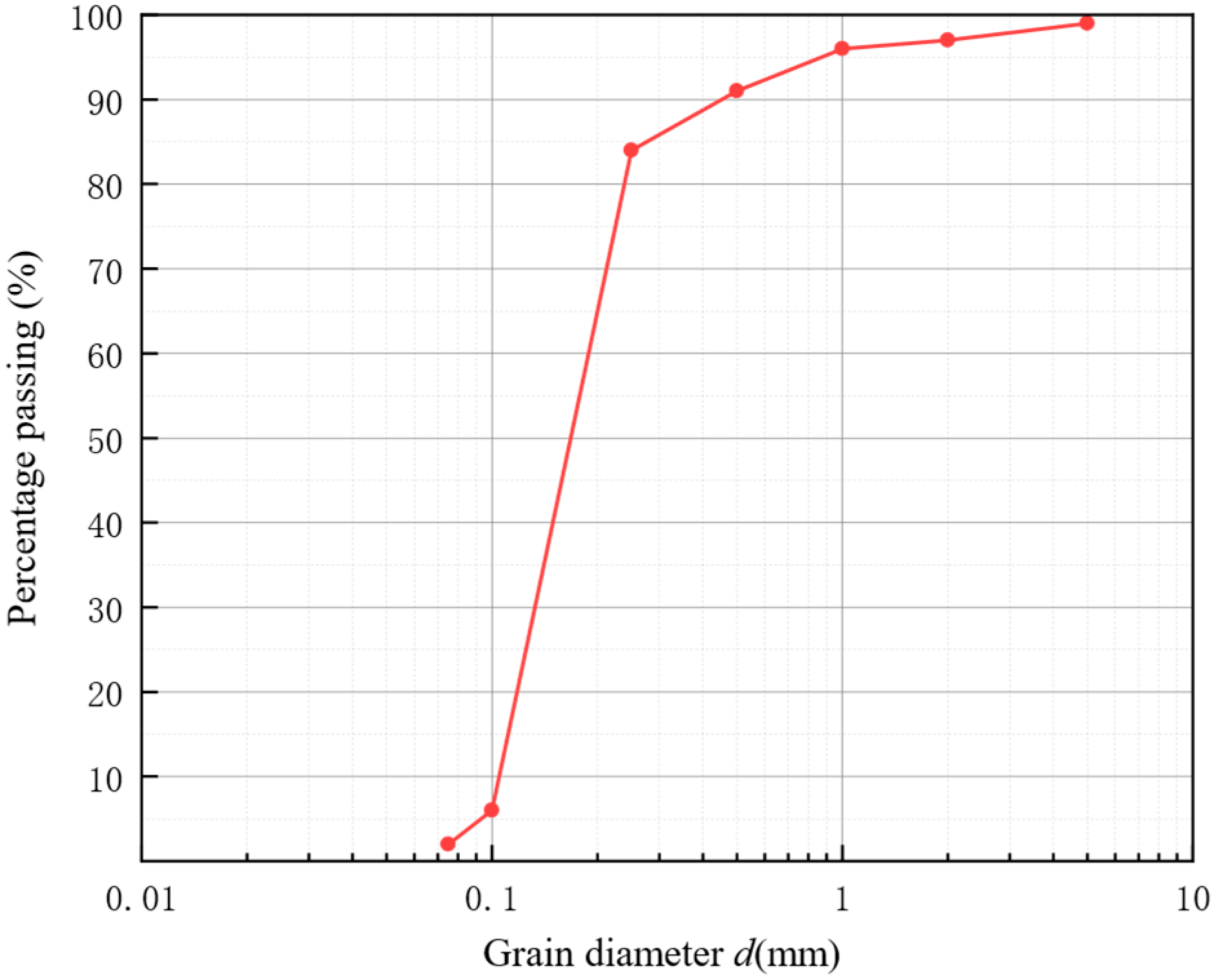
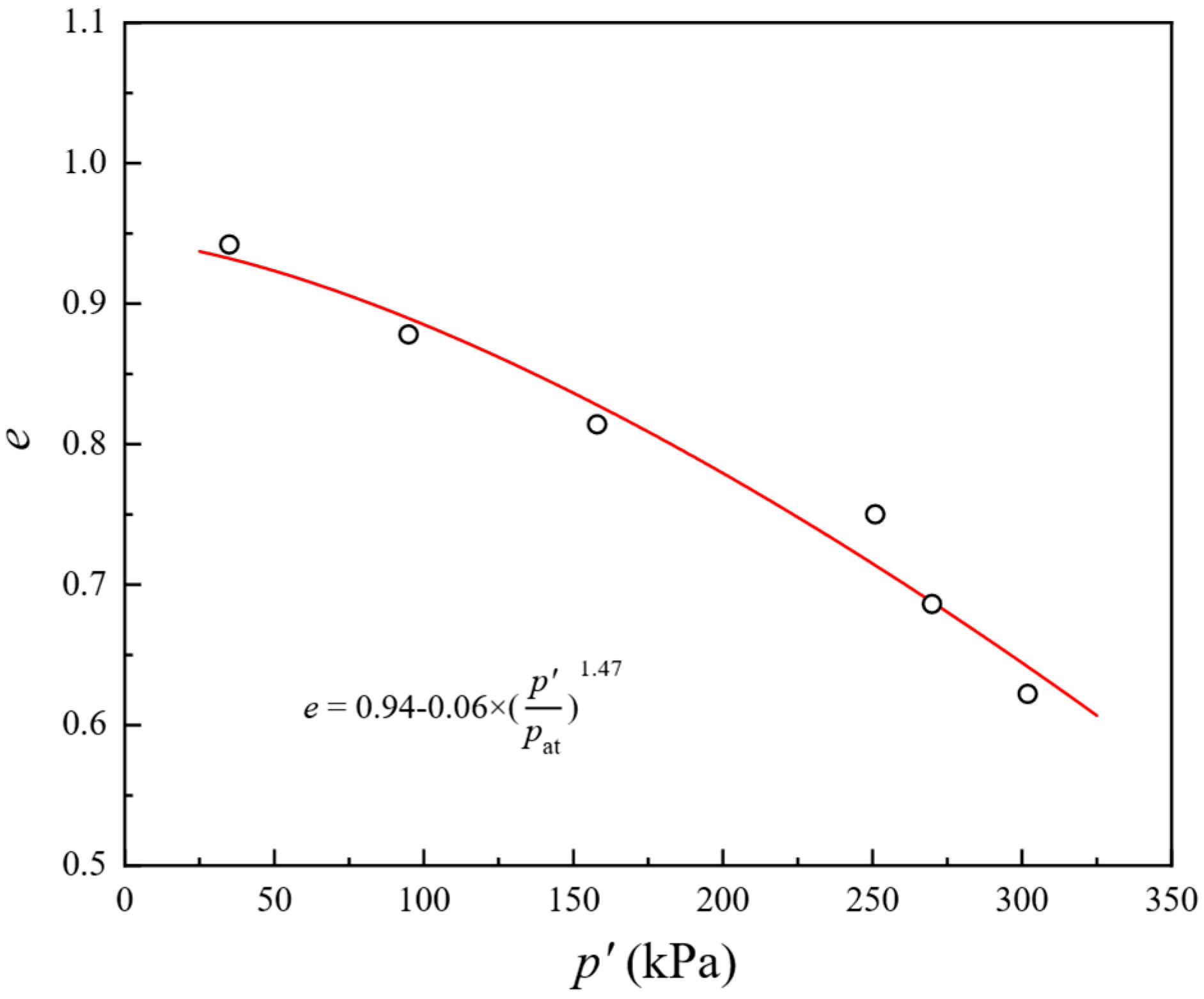
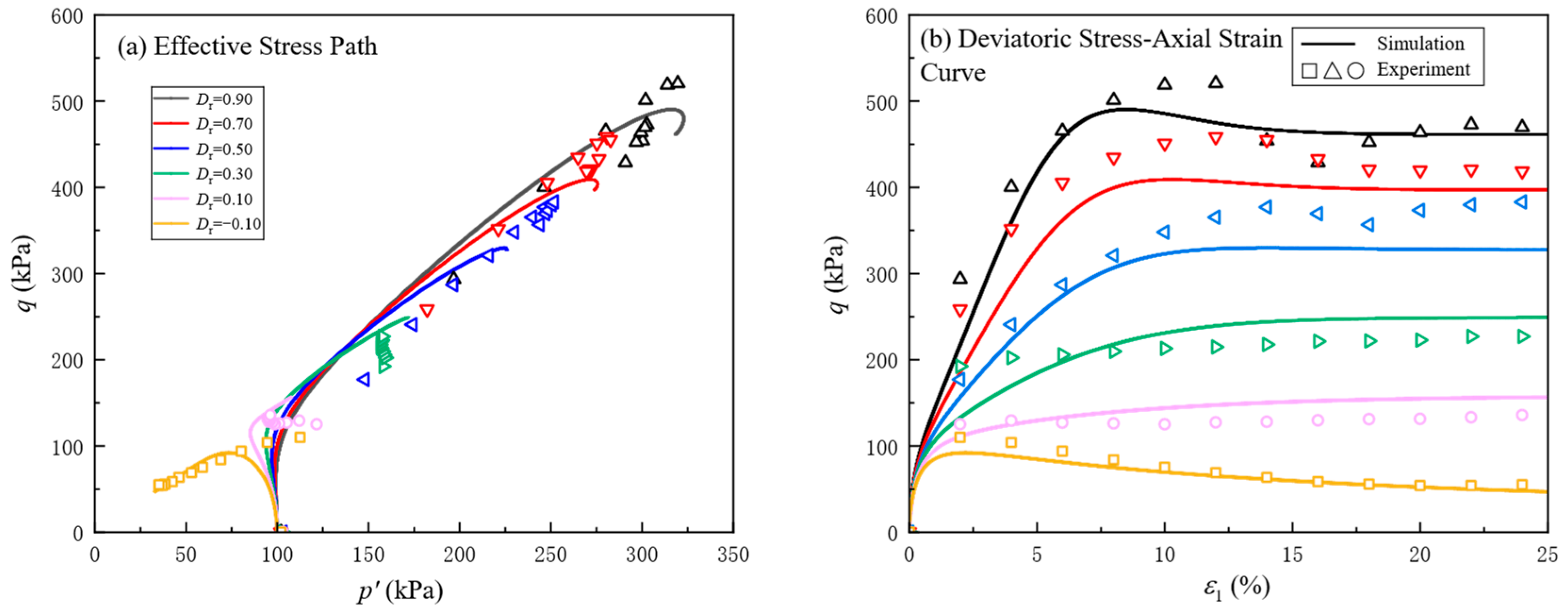
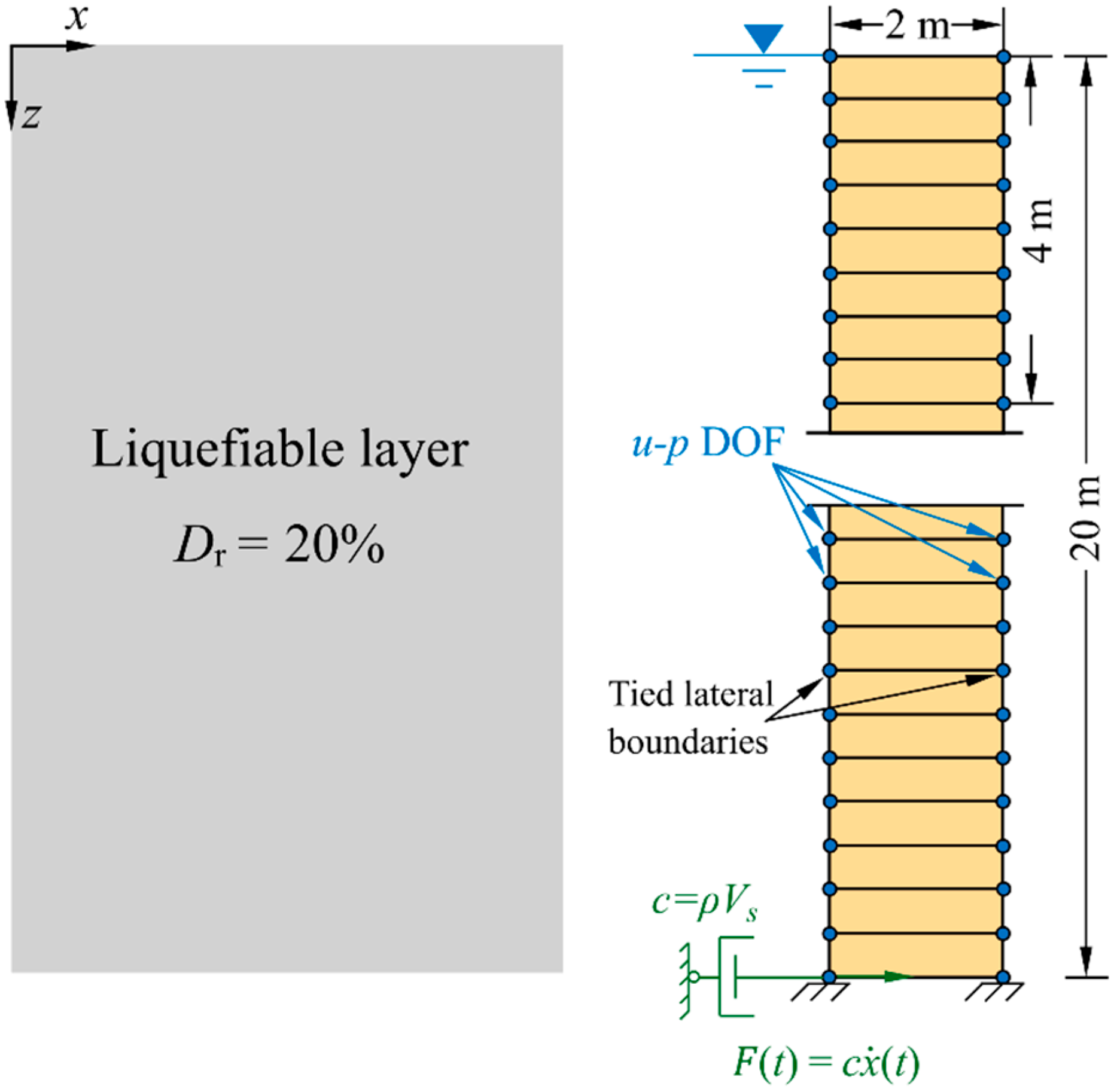
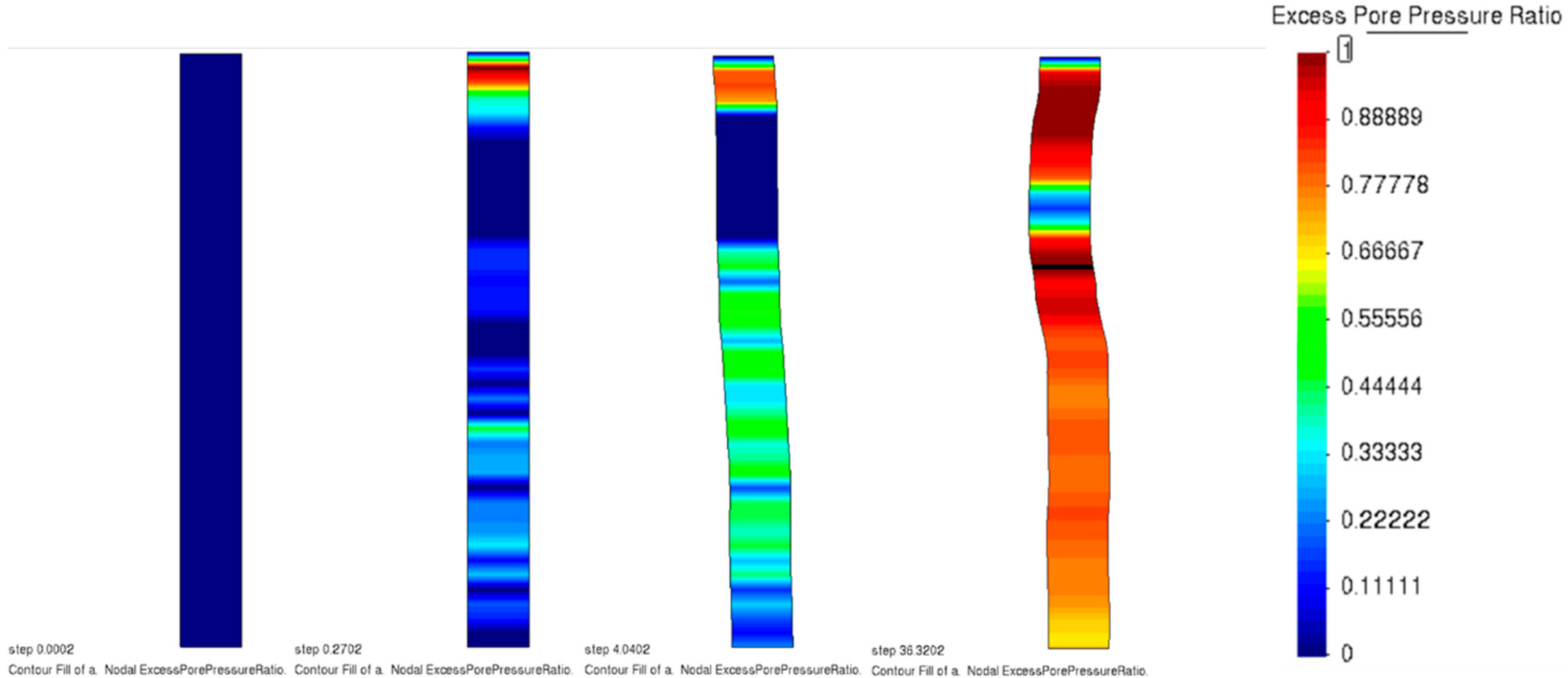


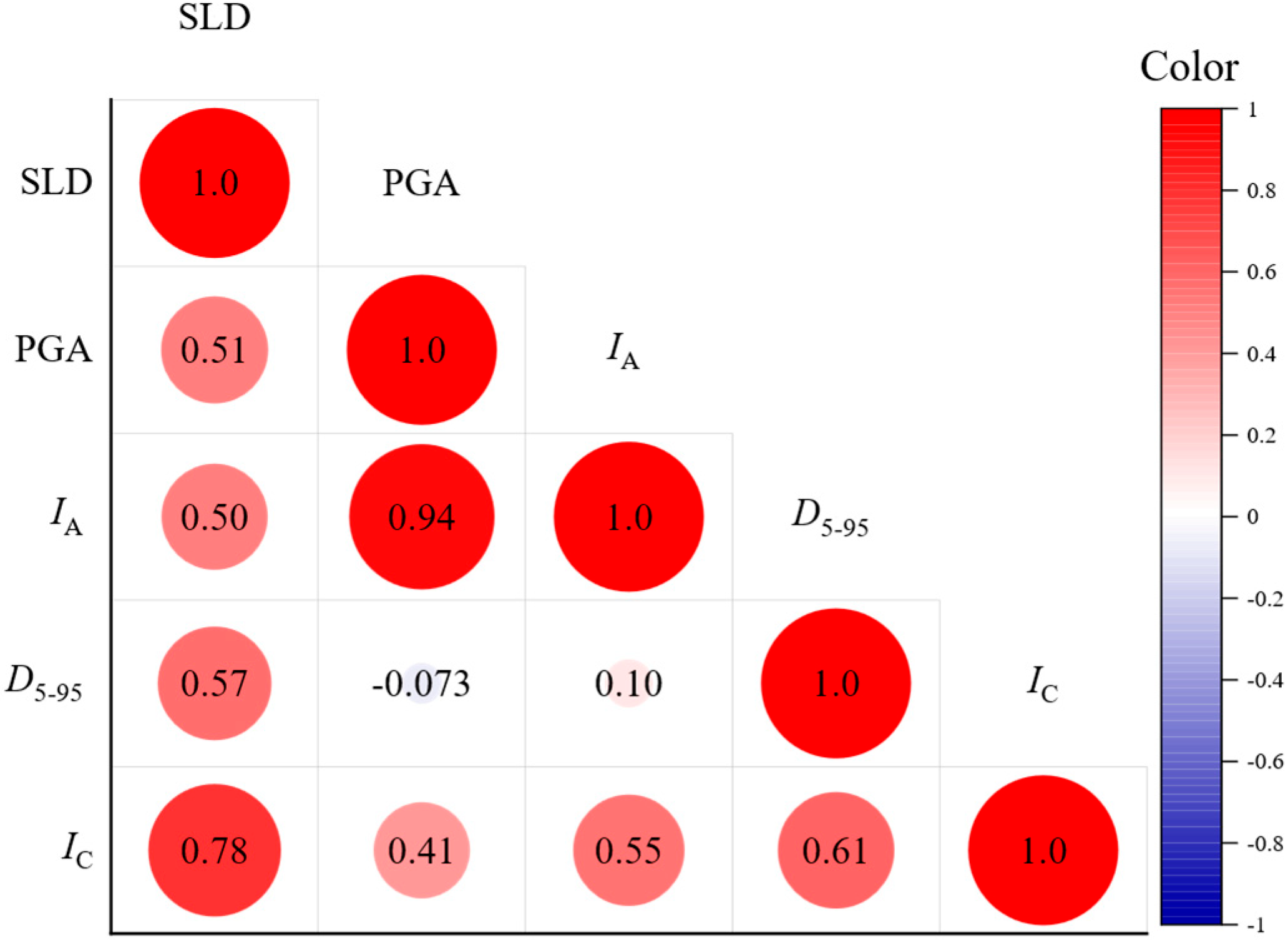
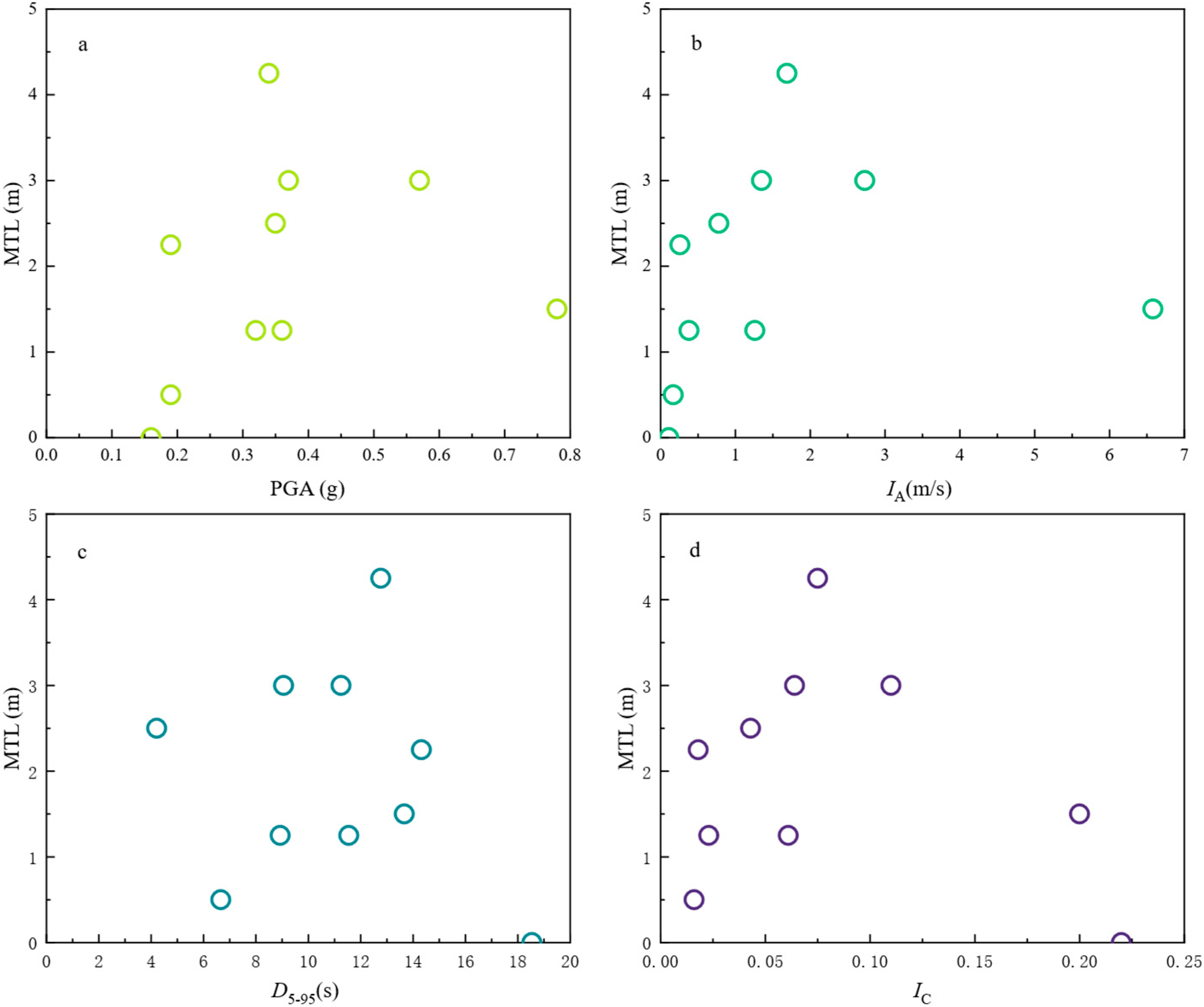
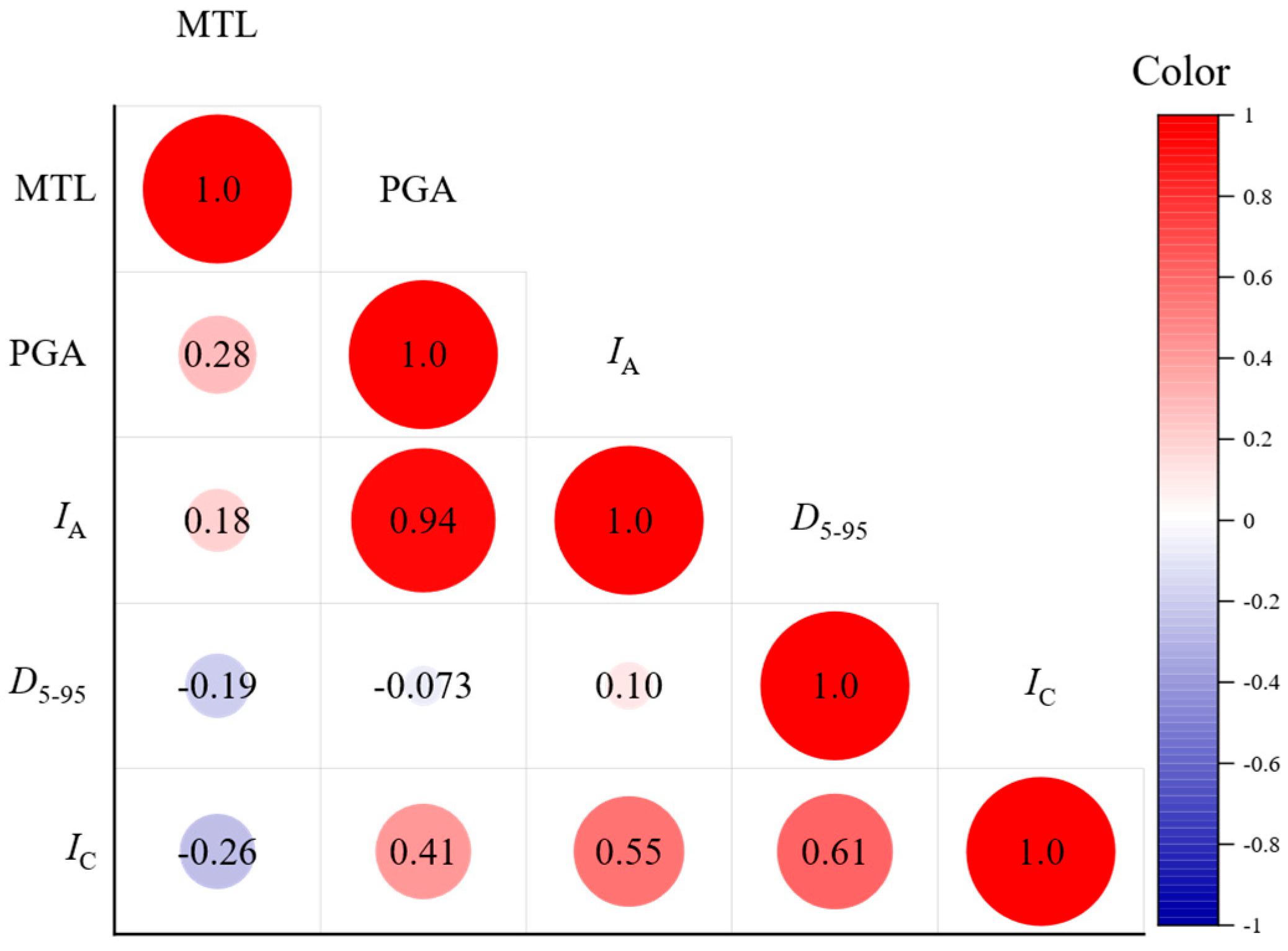
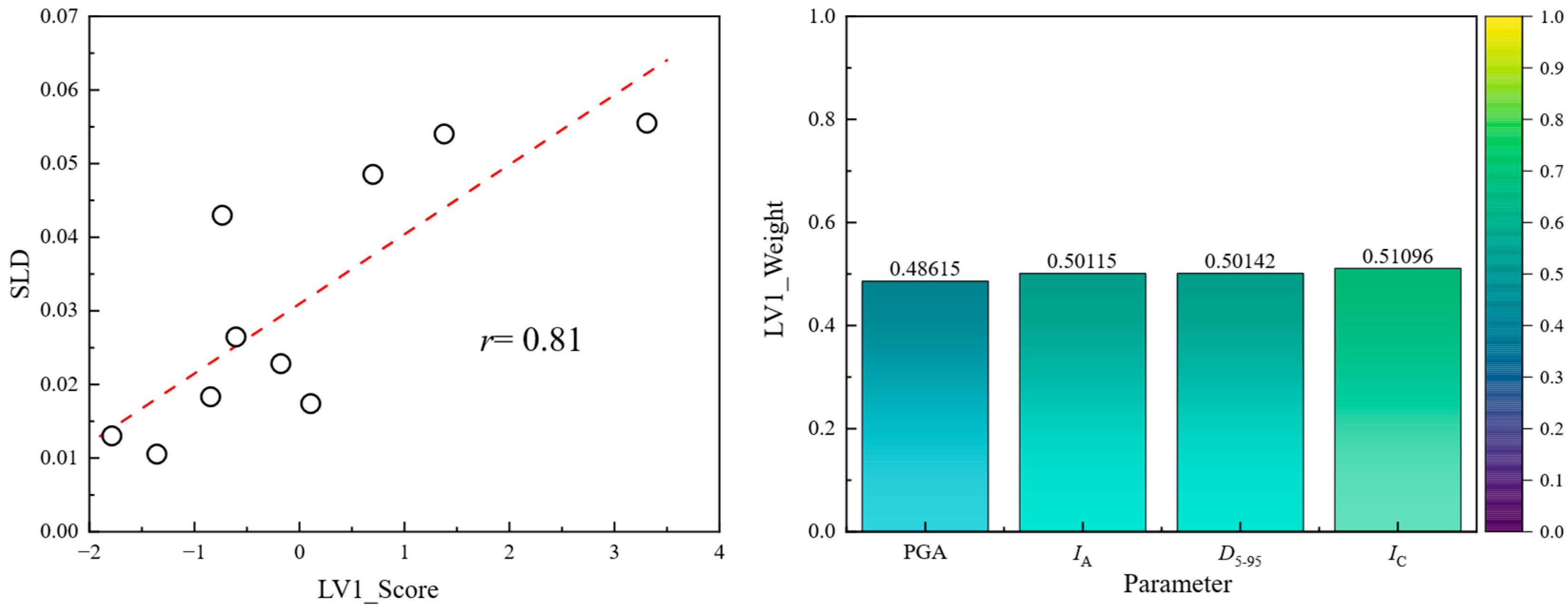
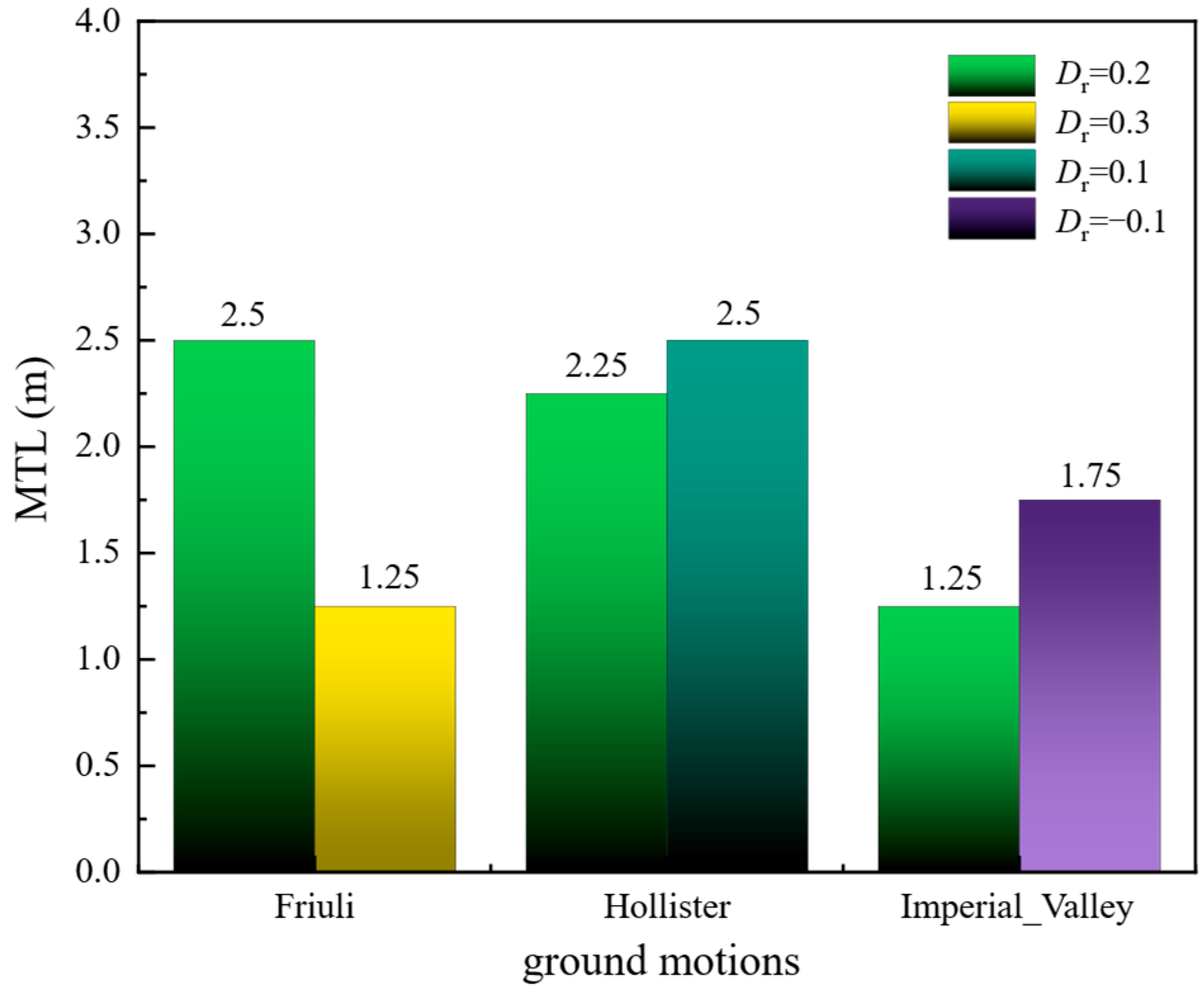
| Classification | D50 (mm) | Cu | emin | emax | Gs | Ip | ks (m/s) |
|---|---|---|---|---|---|---|---|
| SP | 0.17 | 1.5 | 0.59 | 0.91 | 2.68 | 17.5 | 1.0 × 10-7 |
| Constant | Variable | Value |
|---|---|---|
| Elasticity | G0 | 125 |
| v | 0.05 | |
| Critical state | M | 1.25 |
| c | 0.71 | |
| λc | 0.06 | |
| e0 | 0.94 | |
| ξ | 1.47 | |
| Yield surface | m | 0.01 |
| Plastic modulus | h0 | 0.85 |
| ch | 0.15 | |
| nb | 1.10 | |
| Dilatancy | A0 | 0.11 |
| nd | 3.50 | |
| Fabric-dilatancy tensor | zmax | 4 |
| cz | 600 |
| Input Motion | PGA (g) | IA (m/s) | D5–95 (s) | Ic (-) |
|---|---|---|---|---|
| ChiChi | 0.36 | 0.38 | 11.55 | 0.023 |
| Friuli | 0.35 | 0.78 | 4.21 | 0.043 |
| Hollister | 0.19 | 0.26 | 14.32 | 0.018 |
| Imperial_Valley | 0.32 | 1.26 | 8.93 | 0.061 |
| Kobe | 0.34 | 1.69 | 12.77 | 0.075 |
| Landers | 0.78 | 6.58 | 13.67 | 0.2 |
| Loma_Prieta | 0.37 | 1.35 | 11.25 | 0.064 |
| Northridge | 0.57 | 2.73 | 9.06 | 0.11 |
| Trinidad | 0.19 | 0.17 | 6.66 | 0.016 |
| Yinchuan | 0.16 | 0.11 | 18.54 | 0.22 |
Disclaimer/Publisher’s Note: The statements, opinions and data contained in all publications are solely those of the individual author(s) and contributor(s) and not of MDPI and/or the editor(s). MDPI and/or the editor(s) disclaim responsibility for any injury to people or property resulting from any ideas, methods, instructions or products referred to in the content. |
© 2025 by the authors. Licensee MDPI, Basel, Switzerland. This article is an open access article distributed under the terms and conditions of the Creative Commons Attribution (CC BY) license (https://creativecommons.org/licenses/by/4.0/).
Share and Cite
Hu, B.; Ji, W.; Zhao, Y.; Qiu, S.; Zhu, Z. Assessment of Seismic Intensity Measures on Liquefaction Response: A Case Study of Yinchuan Sandy Soil. Buildings 2025, 15, 3803. https://doi.org/10.3390/buildings15203803
Hu B, Ji W, Zhao Y, Qiu S, Zhu Z. Assessment of Seismic Intensity Measures on Liquefaction Response: A Case Study of Yinchuan Sandy Soil. Buildings. 2025; 15(20):3803. https://doi.org/10.3390/buildings15203803
Chicago/Turabian StyleHu, Bowen, Weibo Ji, Yinxin Zhao, Sihan Qiu, and Zhehao Zhu. 2025. "Assessment of Seismic Intensity Measures on Liquefaction Response: A Case Study of Yinchuan Sandy Soil" Buildings 15, no. 20: 3803. https://doi.org/10.3390/buildings15203803
APA StyleHu, B., Ji, W., Zhao, Y., Qiu, S., & Zhu, Z. (2025). Assessment of Seismic Intensity Measures on Liquefaction Response: A Case Study of Yinchuan Sandy Soil. Buildings, 15(20), 3803. https://doi.org/10.3390/buildings15203803







